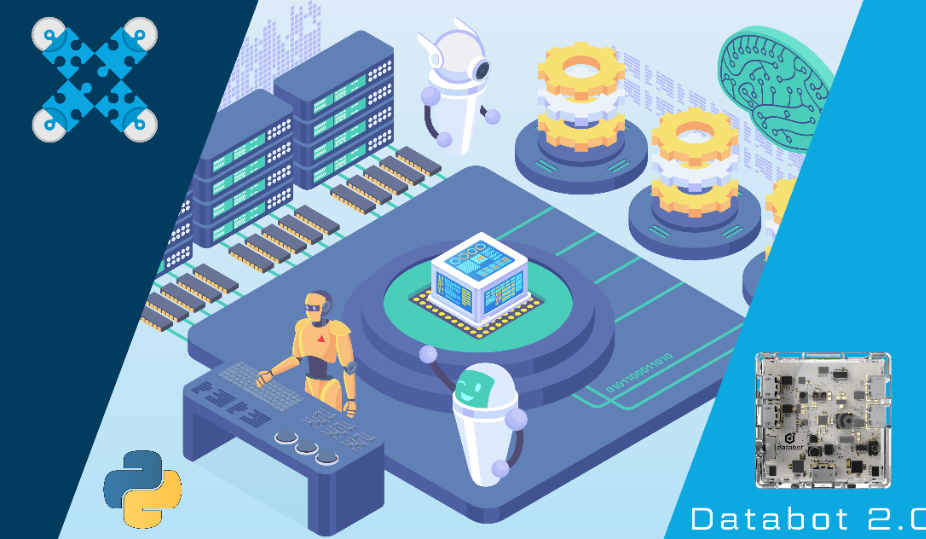
Blog Articles
NEW COURSE! Machine Learning with databot 2.0 + Python
July 10, 2023 — 2 minutes
Collect Data, Program & Learn like a Machine!
Watched any good movies lately? Well if you have, it was likely recommended to you by a streaming service utilizing Machine Learning. Did your smartphone spell-check your last text? That’s machine learning too! If you’ve ever seen a self-guided vacuum bump into a couch, and then turn and maneuver around it – you have witnessed Machine Learning in action. Needless to say, machine learning has become a great tool to assist humankind by equipping technology with decision-making skills.
These decision-making skills simulate human learning patterns to allow the “machine” to learn, grow, update, and develop itself by continually assessing data based on past outcomes. That self-guided vacuum? It may bump into that couch a few times before it “mentally” adjusts to change direction. So, how do we teach a computer to learn? DroneBlocks’ curriculum developer, Pat Ryan, has developed an exciting new Course with over 10 in-depth lessons that introduce the basics of machine learning and put it into practice with real hardware using Python and databot 2.0.
If you are not familiar with databot 2.0, it is a bite-sized piece of hardware that is teeming with 16 science sensors that ingest data regarding sound, light, movement, climate, and more. Typically at DroneBlocks, we strap the Databot to a Drone or Quadruped for reconnaissance missions – however, it also makes for a great Machine Learning tool because of the Datasets we can collect from it. Other tools you will learn in this course are Jupyter Notebook and Pandas, which are software essentials to any Machine Learning Developer’s toolbox.
Lessons in this course include fun and practical examples. The introductory challenge will entail applying Machine Learning to a dataset based on the passengers of the Titanic, by utilizing Machine Learning to calculate the survivability of passengers during the disaster based on the population data provided. A later lesson involves driving an 8-bit car using your keyboard – which may remind you of an old-school video game – and then using that data to teach the car to drive autonomously. All of this culminates in connecting via Bluetooth to the databot 2.0 via the Databot-py pip package and exercising your new skills in Machine Learning on actual hardware using live sensor data from its environment.
After completing the course, students will be comfortable with Machine Learning as a concept, as well as proficient in the essential tools and software to implement the Machine Learning development process. Students will also become more familiar with Machine Learning’s role in practical applications such as industrial and self-driving, as well as advanced applications such as healthcare and research.
We are so excited to offer this course in Machine Learning as it is a staple in the development of today’s most exciting technologies. It is also a great utilization of the Databot 2.0, whose capabilities as a learning tool are merely warming up. Be sure to join us in the DroneBlocks forum to continue the discussion and provide feedback on this course… so we can continue to collect data and build on our offerings to you!
Elevate Learning with DroneBlocks STEM Curriculum
It's not just about coding—it's about fostering innovation and critical thinking in young minds. Our curriculum is meticulously crafted to engage students at every level, integrating theory with hands-on activities. See all of the courses we have available today!